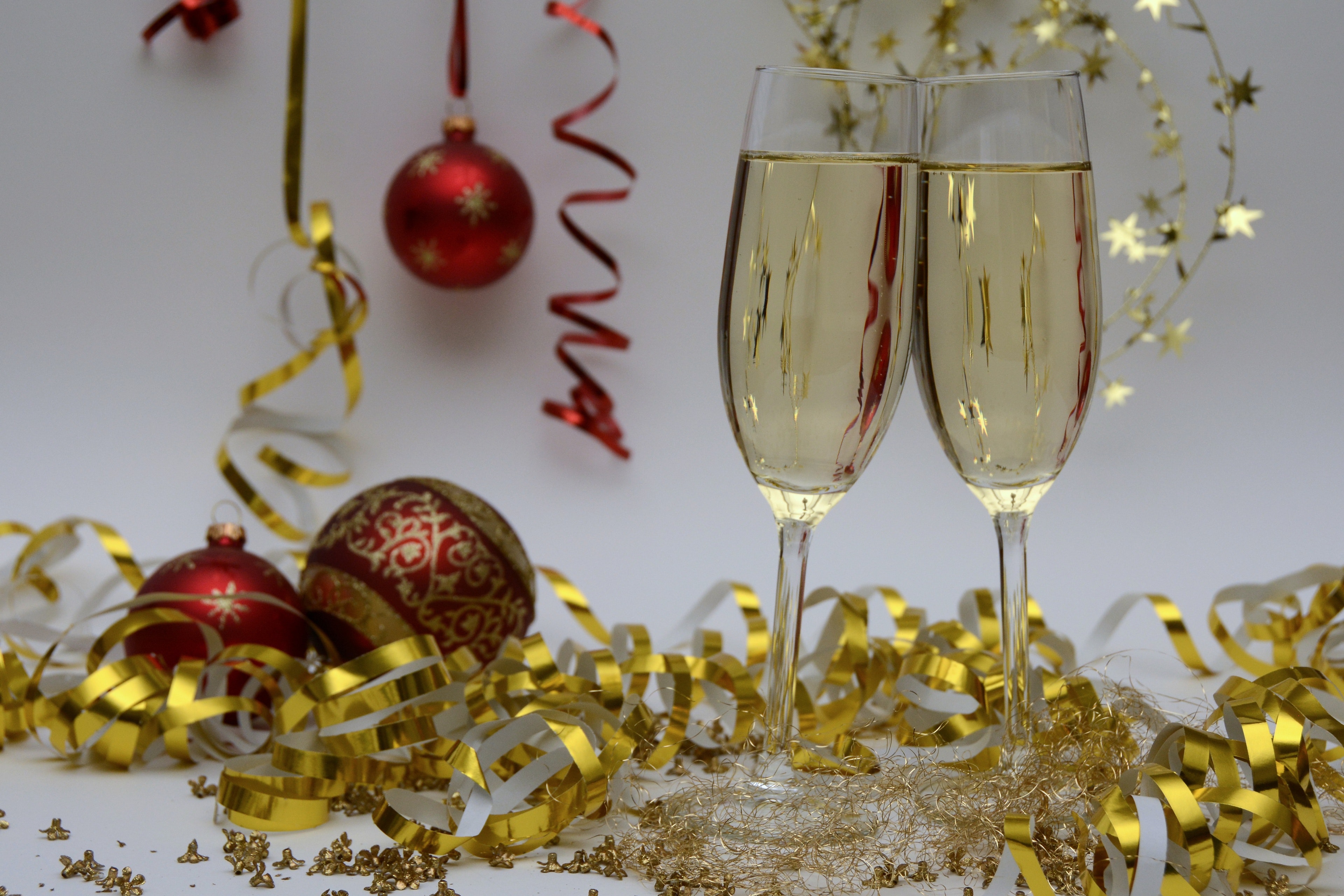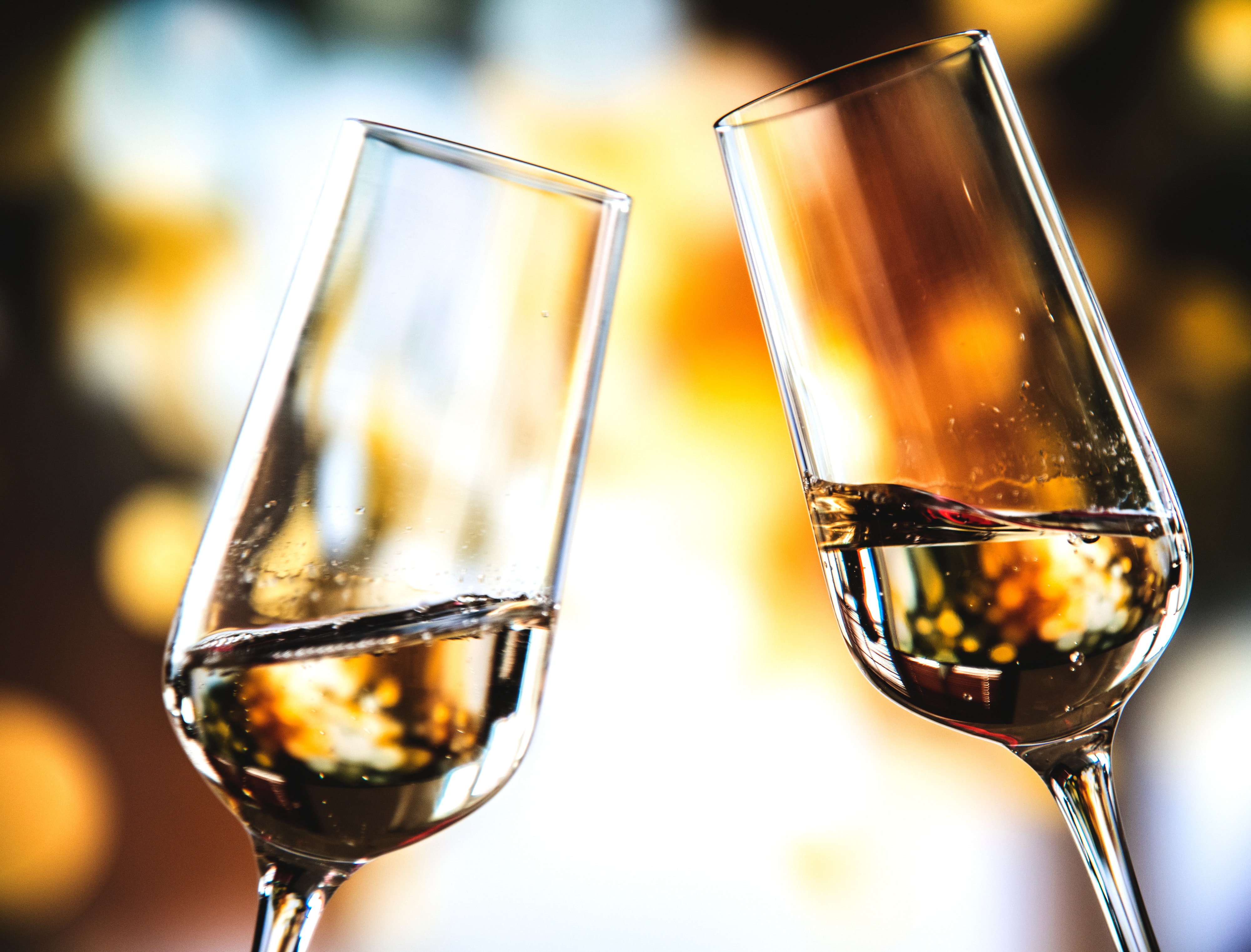Nothing says “Happy New Year!” or “Let’s celebrate!” like the unmistakable pop of a champagne cork. And what better way to express “Congrats” or “Life is good” than with the distinct clinking sound of two champagne flutes colliding to toast a big accomplishment or a happily-ever-after. And, of course, for those who want to live a life of pomp and swagger, nothing says “Hey, I’m better than you!” than rockin’ a $300 bottle of Dom.
Champagne is integrally connected to ideas of quality and prestige, of happiness and success. Sitting atop the sparkling-wine food chain, champagne has earned its reputation as the best and most popular wine in the world. But what exactly is champagne, what makes it so fancy, and what has us all simply bubbling over with joy at the thought of everyone’s favorite bubbly?

A Bubbly Background
Champagne has been bubbling for hundreds of years now. The oldest known sparkling wine dates back to about 1531, with the first actual champagne popping up about a hundred years later. They say champagne was invented by accident: Before winemakers understood the process, the wine was bottled before it was done fermenting, and bubbles—which were considered a major defect at the time—built up. These unwanted, derelict bubbles caused so much pressure to build up from gas inside the bottles that many would burst, sending shards of glass flying and turning champagne corks into dangerous missiles. This unexpected and spontaneous phenomenon earned champagne the nickname “The Devil’s Wine,” and many winemakers were forced to don heavy iron masks when working in the cellars to avoid champagne shrapnel injuries. Apparently, once one bottle exploded, it could cause a chain reaction that could result in an explosion of up to 90 percent of the remaining bottles.

What’s in a Name?
You can call a spade a spade and you can call me late for dinner, but you better not call just any old sparkling wine “champagne.” Champagne is a fiercely protected name, and it belongs exclusively to the approximately 300 million bottles of the real deal produced per year. The champagne crusaders of the Comité Interprofessionnel du Vin de Champagne (CIVC) are not messing around. In 2008, for instance, Belgian government officials destroyed more than 3,000 bottles of California sparkling wine illegally labelled as champagne. Just like a knock-off purse isn’t supposed to use the Prada label, the CIVC won’t allow any sparkling impostors to legally use their brand name. And just in case you’re thinking of naming your dog or maybe your first-born “Champagne,” think again. They’ll come after you. The champagne folks sued Yves Saint-Laurent in the 90s over their perfume known as Champagne and even threatened a lawsuit against Apple in 2013, when the company came out with what they wanted to refer to as a “champagne”-colored iPhone. It’s now simply called gold.
Though champagne is still the best, there are plenty of perfectly good—and much cheaper—sparkling wines out there: wines like cava from Spain, Italian Prosecco, Crémant from several non-Champagne regions of France, and a whole slew of American sparklings. Personally, I’m not one to scoff at a nice bottle of Barefoot Bubbly or Asti Spumante. But if it’s effervescence that you seek, I hate to burst your bubble: Prosecco has as much as four fewer bars of atmospheric pressure than champagne, and Crémant has about one less, which means they are both far less bubbly. In comparison to champagne, these other varieties are, therefore, kind of the sparkling-wine equivalent of drinking a day-old can of Coke left open in the fridge. But their flavor, accessibility, and, especially, their price point keep them from falling completely flat.

Golden Rules
Champagne must abide by many rules in order to be champagne. The wine, and the grapes that compose it, must all come from the Champagne region of France—that illustrious little wine-producing area about a hundred miles east of Paris, comprised of about 33,000 hectares of vineyards. If a sparkling wine comes from anywhere that is not Champagne—Napa, Oregon, Detroit—then it’s not champagne, either. But it’s about more than just location. Champagne must be made primarily with Pinot Noir, Pinot Meunier, and Chardonnay grapes that are required to be handpicked, and the sparkling is held to many other guidelines of quality and production. For example, there are strict champagne commandments that regulate how the vines are pruned, how the grapes are pressed, and even how many vines and grapes can be grown.
Champagne must be produced through a process called the méthode champenoise, which involves a secondary fermentation in the bottle. After the initial fermentation (which produces alcohol), the wine is bottled, and yeast and sugar are added. As the yeast cells devour all that sugar, they get riled up and excited, producing carbon dioxide that forms energetic little bubbles. Think of it like a bunch of hyperactive kids bouncing off the walls after eating too much Halloween candy. This is how champagne gets its fizziness.
All champagne must then be aged for a minimum of a year, though many of the better champagnes are aged for three to 10 years, and some for as many as 30.
These many exacting standards, its relatively limited production, its assured quality, and its associations with royalty and riches, as well as a little skillful marketing, keep champagne highly sought after and its cost elevated. The prices of some of the poshest bottles can soar to around $50,000, but if you really want to splurge on your next sipping experience, invest in the “Taste of Diamonds” champagne from 2013, which tops the list of the Top 10 Most Expensive Champagne Bottles in the World for 2018 at a whopping $2.07 million. You can justify the purchase knowing that not only will you get some kick-ass champagne, but the bottle is also decked out in 18-karat gold with a single 19-karat diamond. And hey, it’s a grand cru after all, meaning you’ll be getting the best champagne of the very best. Or, you can buy a two-bedroom in Manhattan for the same price.

Filling Your Flute
As you plan out your upcoming New Year’s Eve festivities, champagne ought to be on the guest list. So, to help you get a blanc de blancs that’s not just blasé or choose between Moët and Mumm, below is a list of a few suggested bottles to fit any budget (including a few worthwhile non-champagne sparkling wines).
These selections are thanks to Sarah Arceneaux, a certified sommelier via The Court of Master Sommeliers and a wine guru at Brennan’s Restaurant. She recommended some decent to top-notch sparkling wines for a whole range of New Year’s Eve plans and price ranges. So, here are a variety of scenarios and the bottles to pair with them:
1. $15 or less a bottle: You’re spending New Year’s Eve home on the couch, watching Dick Clark’s New Year’s Rockin’ Eve with your cat, and you just want something with bubbles that goes down easy.
Arceneaux says, “France, Spain, and Italy make wonderful, bright, crisp sparkling wines without the price tag of champagne,” and suggests these bargain bottles:
- Juvé y Camps Reserva de la Familia Brut Nature Cava, Spain, $14.99: “While the others in this category are bright and easy, this one packs a bang for its buck, with some rich flavors of toast and crème brûlée,” says Arceneaux. She recommends it with duck-fat french fries.
- Lucien Albrecht Crémant d’Alace Brut Rosé NV, France, $15.00
- Riondo Proesecco Spago Nero, Italy, $13.99
2. $15 to $30 a bottle: You have to go to the in-laws’ annual New Year’s Eve potluck dinner. You really couldn’t care less what bottle you bring, but you know, for your significant other’s sake, that you have to at least look like you tried.
- Moutard Brut Grande Cuvee NV Champagne, $24.95
- Weingut Brand Pet Nat Weißburgunder Sylvaner NV, Germany, $27.99: Who knew Germany made good sparklings? “Germany has a long history of making sparkling wines that are bright and fresh and easy on the wallet as well,” Arceneaux explains.
- Argyle Brut 2014, Willamette Valley, Oregon, USA, $23.99
(Everything from now on is real champagne).
3. $30 to $50 a bottle: Now you’re getting fancy. You have a hot date to a friend’s New Year’s Eve bash, and you want to impress her (or him) with your fine champagne selection—or, at least, get him (or her) tipsy enough to kiss you at midnight.
- Drappier Carte d’Or Brut, $39.99
- G.H. Mumm Cordon Rouge Brut NV, $39.99
- Billecart-Salmon Brut Rosé NV, Half Bottle, $41.99: “For the times you want something special, but don’t want the commitment [or the cost] of the whole bottle,” Arceneaux says.
4. $50 to $70 a bottle: Extravagant and romantic dinner for two. You can’t believe you managed to score a table at the hottest place in town, especially on New Year’s Eve. You’re even thinking of popping the question—so you should plan on popping open a darn good bottle as well. When you bring her back to your place to watch the ball drop and celebrate your impending nuptials, you better not be pouring André.
- Saint-Chamant Brut Rosé or Blanc de Blancs, $59.99
- Dom Ruinart Brut Rosé, $59.97
- Delamotte Blanc de Blancs NV, $64.99
5. $70 and up: You’re going to one of those super-extravagant, all-out-night-on-the-town, formal kinds of NYE events: open bar, all-night buffet, bottle service, black-tie attire, with tickets that cost more than you paid to see Beyoncé in concert. You definitely want to pre-game with a bottle that fits that same mood.
- Gaston Chiquet “Special Club” Brut, $72.50
- Egly-Ouriet Millesime Brut Grand Cru, $96.41
- Jacques Selosse “Substance” Blanc de Blancs, $388, for that special splurge

